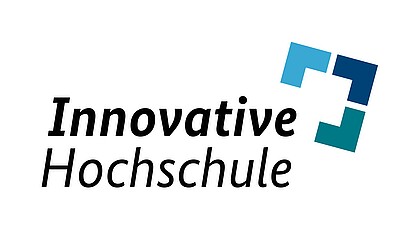The Saxon transfer network is off to a positive start next year.

The five Saxon universities of applied sciences (HAW) look back on four exciting years of knowledge and technology transfer in the Saxony5 transfer network and look forward to the last year of the funded project with positive energy.
Companies are always dependent on innovations in order to further develop products or services or to create new ones. The five Saxon universities of applied sciences, namely HTW Dresden, Westsächsische Hochschule Zwickau, Hochschule Zittau/Görlitz, HTWK Leipzig and Hochschule Mittweida, took this starting point as an opportunity to launch a joint collaborative project in the field of knowledge and technology transfer in 2017. Research topics that are being worked on at the UAS are to be brought to the outside world and implemented in concrete projects with partners from companies and society. In turn, companies also have the opportunity to get in touch with researchers via so-called transfer officers at the universities in order to have their ideas checked for feasibility or to receive support with implementation. This takes place in the so-called co-creation labs. Here, technological transfer and interdisciplinary collaboration are used to pool the HAW's expertise, various skills, ideas, processes and technologies in order to conduct research and develop innovations with each other and with external partners.
Research is complex and often difficult for outsiders to understand. An important part of transfer work is therefore to prepare research results and explain them in an understandable way. What could be better suited to this than events that are not just designed for scientific staff? Even under pandemic conditions, 45 events such as "A Beer with Researchers", "Citizens Meet Science", "Transfer Impulses", "Matchmakings" and the "Science Slam" were held in 2021. In the Science Slam, researchers are asked to explain their field of research in an attractive way in 10 minutes. They compete against each other and the audience decides by applause who has presented their topic most convincingly and vividly. A live broadcast on YouTube makes the format accessible to everyone. The aim is to make the researchers' enthusiasm for their science visible and translate it into lively discussions, interested exchanges and new contacts.
The Saxony5 network has grown steadily over the past four years. Numerous non-university research institutions, large companies, small and medium-sized enterprises, chambers of commerce and associations, such as NABU, have already joined in. Despite coronavirus, over 90 projects were successfully completed in 2021 alone, which is almost 40% of all Saxony5 projects carried out in the past four years. The fact that the network also benefits the HAW in detail can also be seen in the enormous increase in third-party funding. This money is an important source of funding for the universities. In 2020 alone, up to 50% more third-party funding was acquired compared to 2018. This is a strong indication that collaborative work leads to an increase in the efficiency and effectiveness of transfer activities in the long term and drives universities forward despite pandemic conditions.
The universities have developed a strong sense of community, worked together constructively and learned from each other. The knowledge gained over the past few years is to be successfully developed and established in a follow-up project in the future. On December 2, 2021, the Saxony5 network therefore submitted a funding application to the Federal Ministry of Education and Research for a second project phase of another 5 years. This application focuses even more on the social and structural challenges in Saxony and also aims to establish transfer activities sustainably and permanently at the participating universities.
Saxony5 has been funded by the Federal Ministry of Education and Research (BMBF) and the Saxon State Ministry of Science, Culture and Tourism (SMWK) since 2018 as part of the federal-state initiative "Innovative University". The network includes the West Saxon University of Applied Sciences Zwickau, the Zittau/Görlitz University of Applied Sciences, the Mittweida University of Applied Sciences, the Leipzig University of Applied Sciences and the Dresden University of Applied Sciences. Researchers from the locations work together on various key topics, e.g. in the fields of additive manufacturing and artificial intelligence, agriculture and biodiversity, supply infrastructure and networked mobility.



